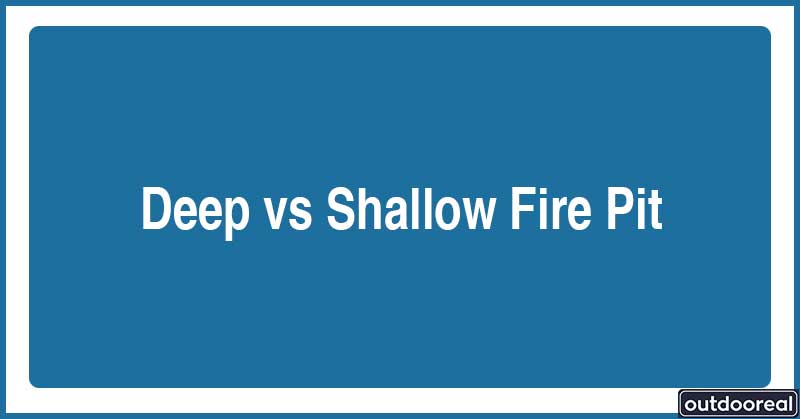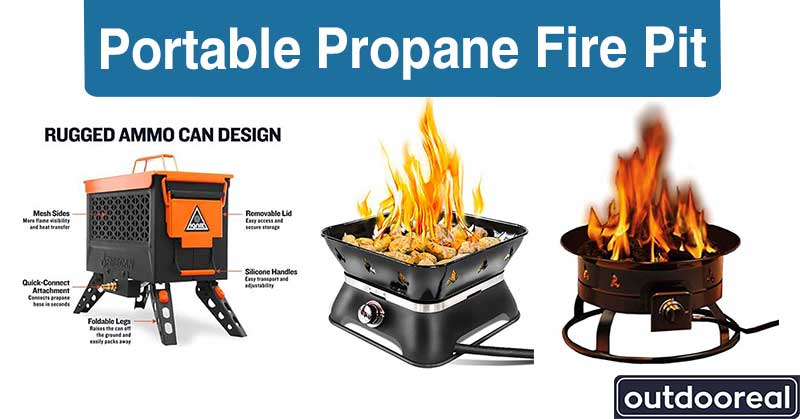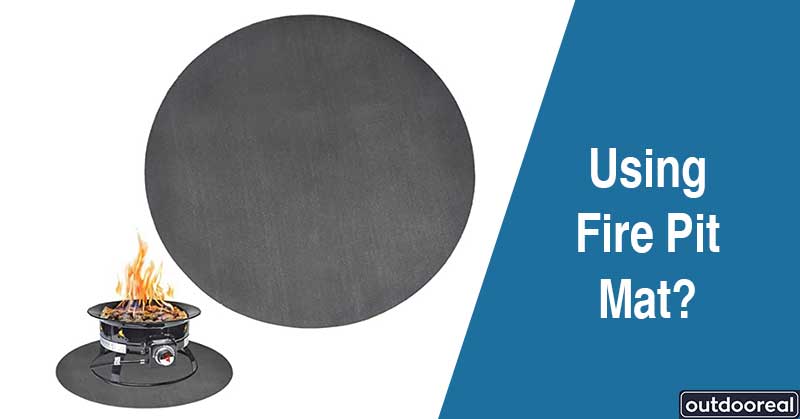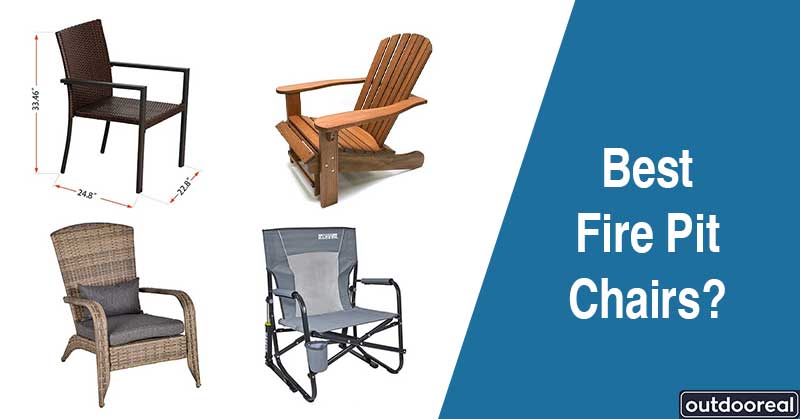Outdoor heaters work by radiating heat. Gas or propane heaters’ working way can be compared to sun or fire pits. In contrast, electric patio heaters have two methods of producing heat. And almost all types of backyard heaters produce heat and spread it along the space. So compared to gas or propane heaters, electric heaters have less heat but the ease of usage and safety.
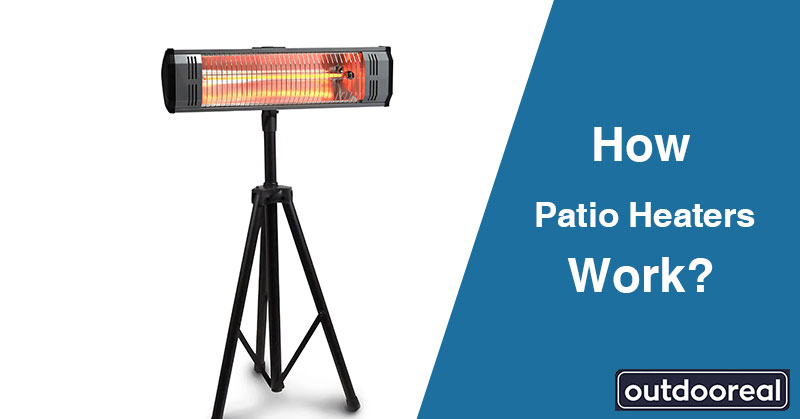
Basic Working Principle of Patio Heater
The primary task of a patio heater, whatever the fuel it uses, is to reflect the heat. So the patio heater has mainly two parts to support the primary function.
The heat source or heat producer
Backyard heaters produce heat in a heating source, and this source and mechanism vary according to fuel types. It is usually a burner that burns liquid gas for propane or gas-powered heaters. If it is a portable one, then it will contain a cylinder. By burning the fuel, heat is produced. On the other hand, in electric heaters, the electricity is converted into infrared heat. This process may follow radiating or convection method.
Heat reflector
When heat is produced, the final task is to reflect the heat. Most heater, for example, standing, table-top, and mushroom heaters, uses reflectors. The reflector is usually silvered, absorbing less heat but successfully radiating it. The reflector sits on top of the heater to avoid upward heat loss by casting the heat back to the heater’s range.
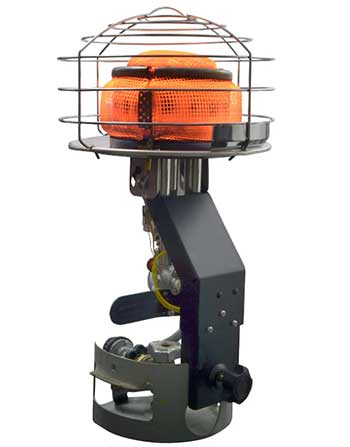
How do Propane/Natural Gas Patio Heaters Work?
Gas or propane patio heaters usually work similarly. However, we have discussed two types of working principles separately for better understanding;
The gas patio heater working principle
Natural gas patio heaters are mostly fixed and can not be moved. As a result, they require a fixed gas connection line. This type of heater burns the gas fuel in the heating source, producing heat. Then the reflector radiates the heat around the space; it does not blow hot air like electric room heaters.
Propane patio heater working principle
Propane heaters are portable and have a peculiar design that separates them from others. Almost propane patio heaters have a stand for the cylinder containing, and you must connect it carefully with the hose. After that, just like a gas patio heater, the heating source burner will burn the liquid gas and produce heat. The heat will be spread with the help of the reflectors. This type of heater also does not cast or blow hot air.
Apart from the central principle, gas and propane patio heaters produce a lot of smoke and toxic gases, such as carbon monoxide. But there are many smokeless gas patio heaters in the market which use double combustion and are better for health and safety.
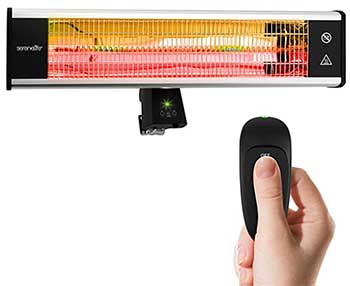
How do Electric Patio Heaters Work?
Electric patio heaters usually convert electricity into heat through radiating or convection. For example, almost all electric infrared patio heat converts electricity into infrared heat and spreads it by emitting it. However, few types use the convection method for heating.
Radiant heating
When a material is heated to a certain degree, radiant heat results, then the heater releases heat via electromagnetic waves. In this method, radiating heat covers a vast region uniformly. You can also say the heat is being pushed into the air in this system.
You may also like this topic: Can I use my patio heater inside my home?
Convection heating
Electricity is transported through a resistor or other substance that blocks an electrical current in a convection patio heater. Finally, it is converted into heat energy and circulates throughout the space. This type of heating uses the principle of thermal conduction and heat in the air.
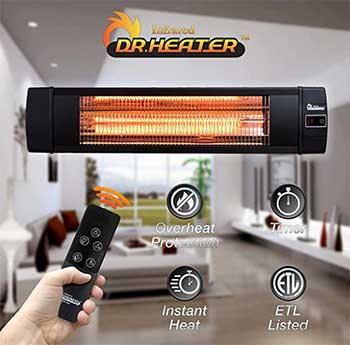
Can I Control the Heat Level in the Patio Heater?
The satisfactory answer is Yes, you can control the heat level or temperature via different methods in a patio heater. This quality of heat control sets the heaters apart from other fire appliances, for example, fire pits, chimineas, and fireplaces. Nowadays, patio heaters are equipped with many options through which the temperature can be controlled;
Regulator
This is the most classic type of heat level regulating, and almost all patio heaters have a regulator for controlling the heat or temperature. Also, some heaters have push buttons too.
Remote control
MOdern backyard or outdoor heaters have remote controls through which you can change the temperature or control the level of warmth by sitting on the couch.
Phone Wifi control
Wifi control is the most recent invention in heater control. Recently, many heaters have been manufactured with wifi connectivity designs. In this feature, you can control the heater with your android, tab, or ios.
When buying a patio heater, consider the types that have a regulator, remote, and wifi control. It will make your user experience smooth and safe.
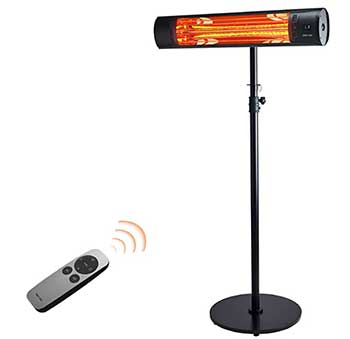
Why do Companies Make Patio Heaters Tall?
Patio heaters are built tall to help spread heat all over the space. 2.5 meters is an elevated height for outdoor heaters. But being too much tall can also make them top-heavy and increase the likelihood that they will tilt or topple over. If exposed to flammable material, residual heat from the reflectors or tubes might cause a fire even after the heater has been turned off—companies design standing patio heaters tall, especially for covering outdoor spaces, restaurants, walkways, etc.
You may also like: Do patio heaters work efficiently in winter?
Final Verdict
Patio heaters are more convenient for ease of usage and portability. Also, the working principle is relatively healthy and safe. For propane and gas patio heaters, it is better to go for the smokeless one for a wholesome experience and smooth functioning.
Moreover, if you are still planning to buy patio heaters, check for the latest technologies, such as wifi control, remote, and other safety features. Though electric infrared heaters produce less heat, they are safer than gas heaters. Consider all the requirements and choose the perfect heater for your home.

